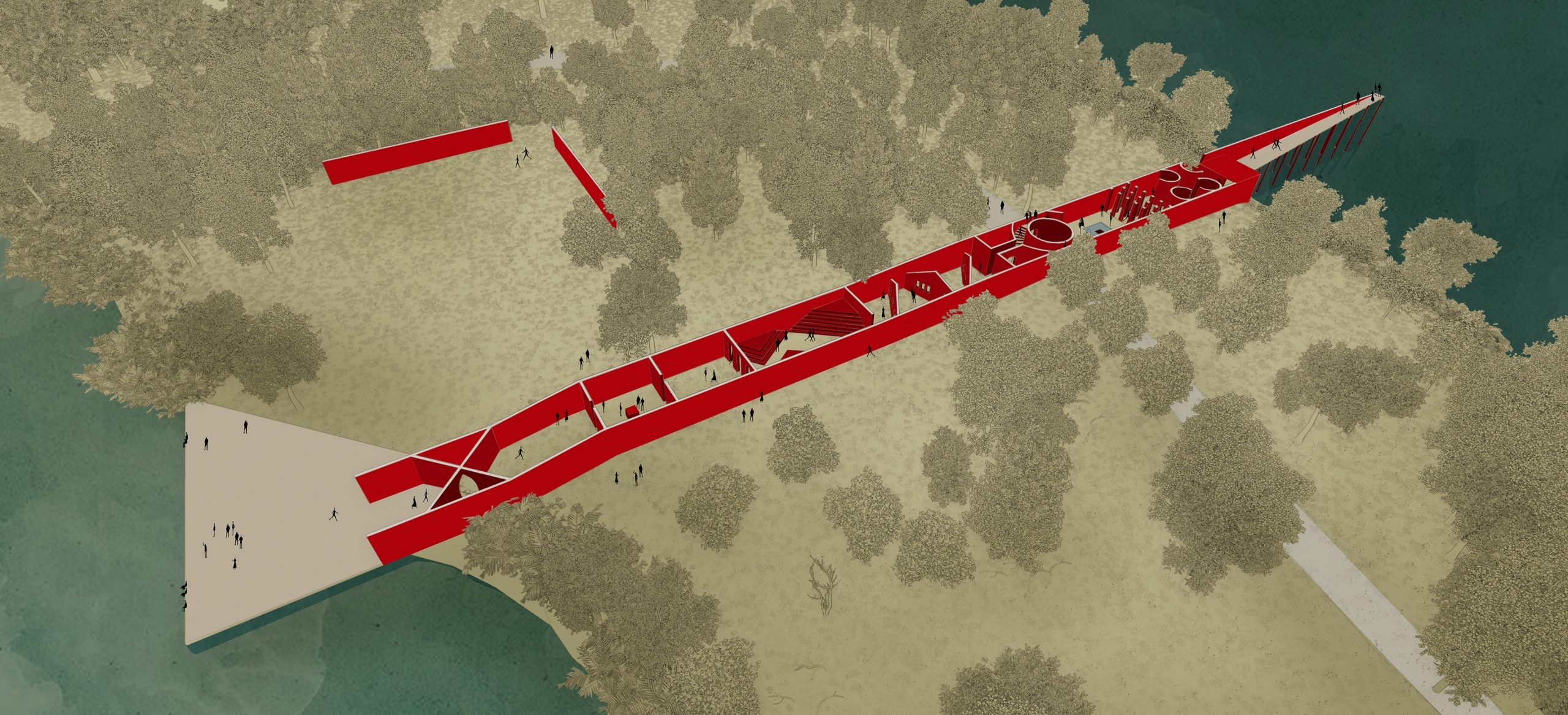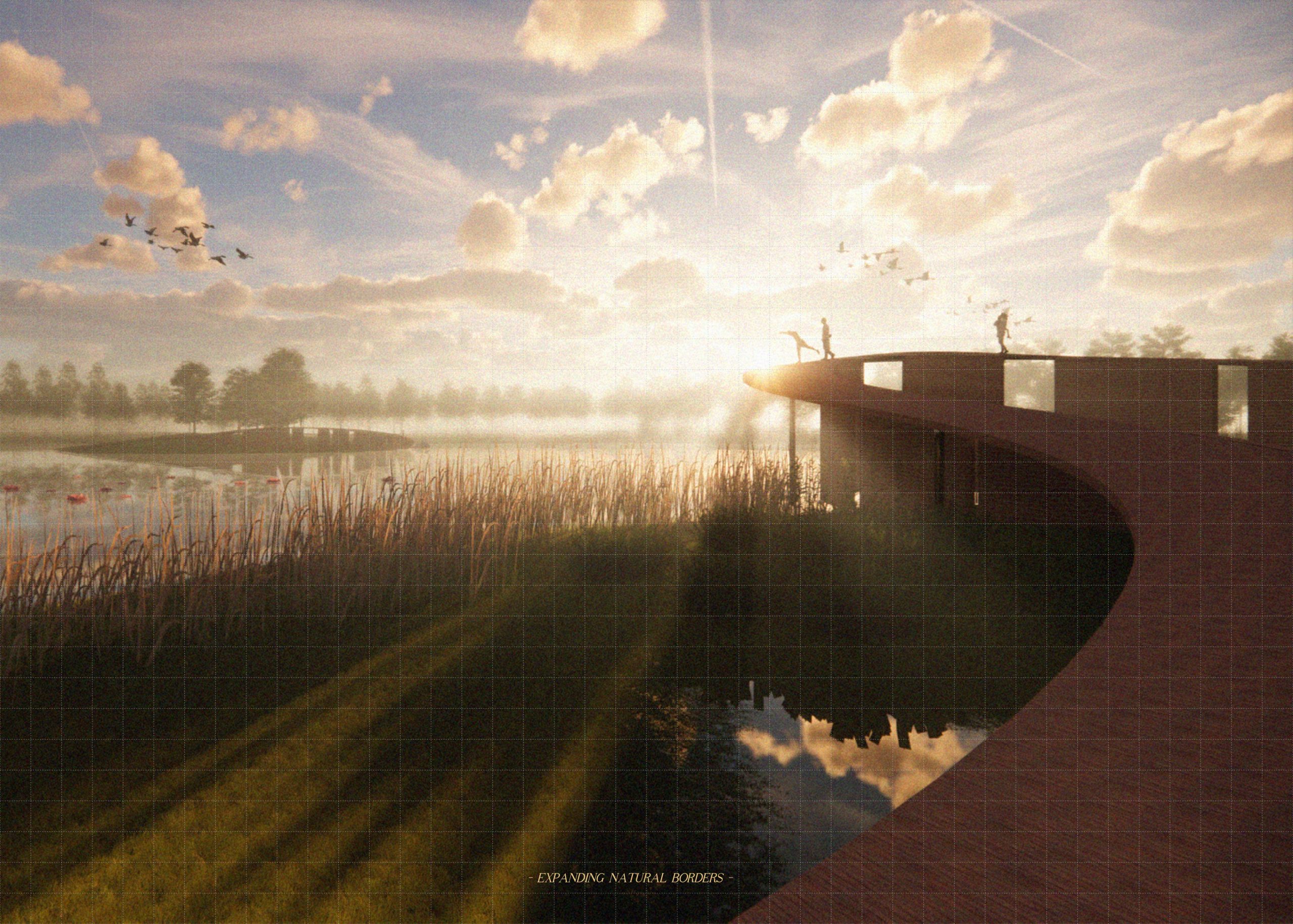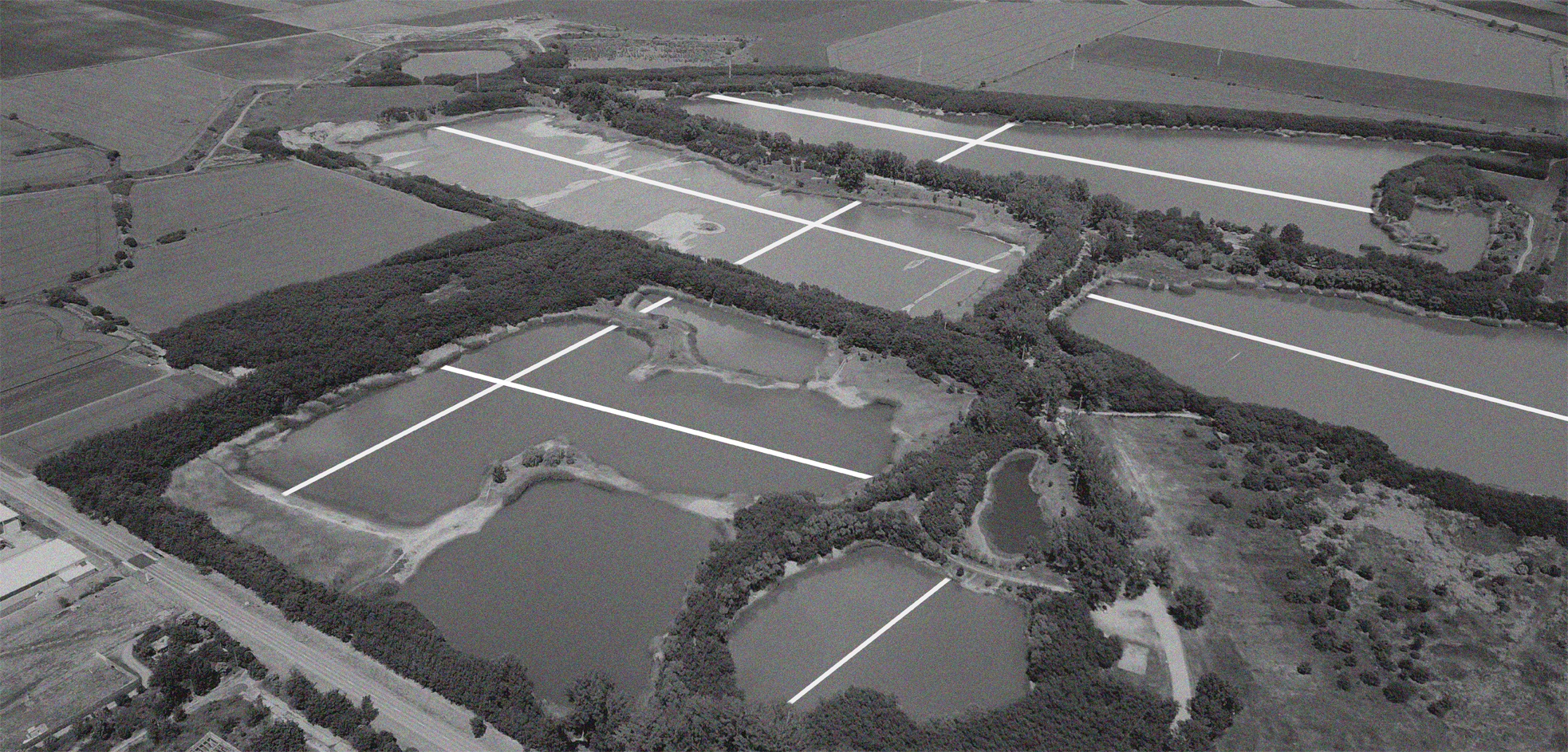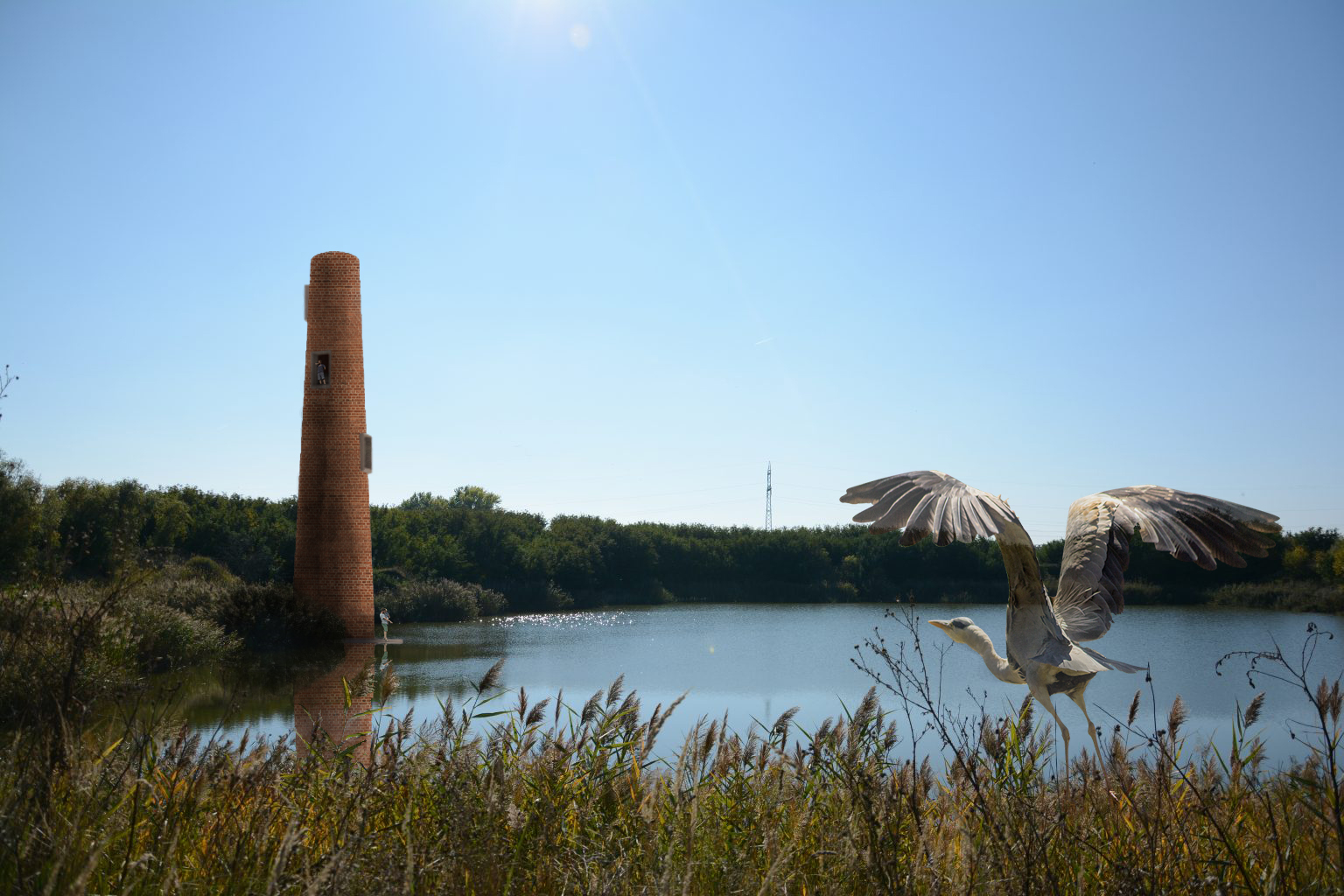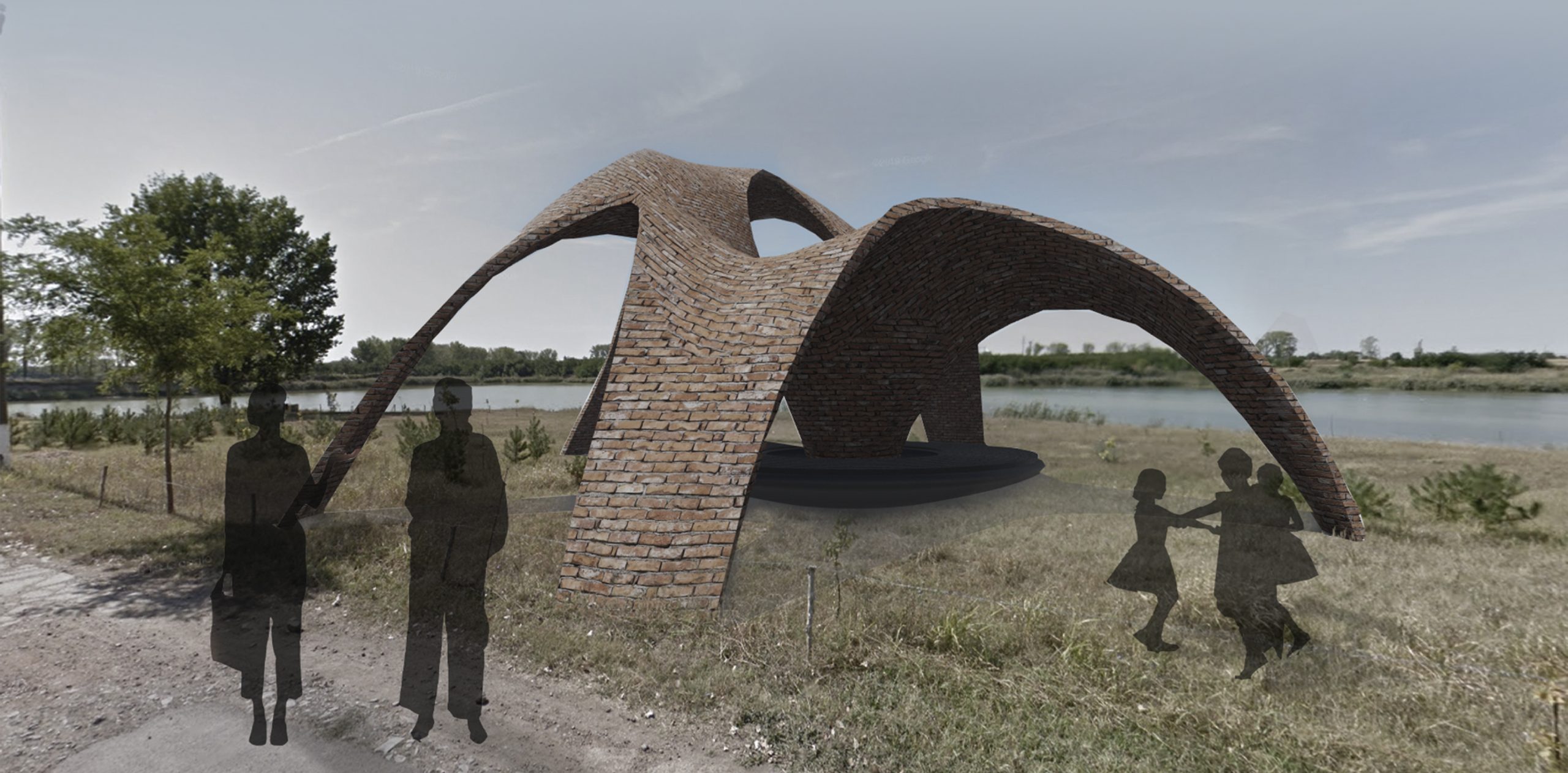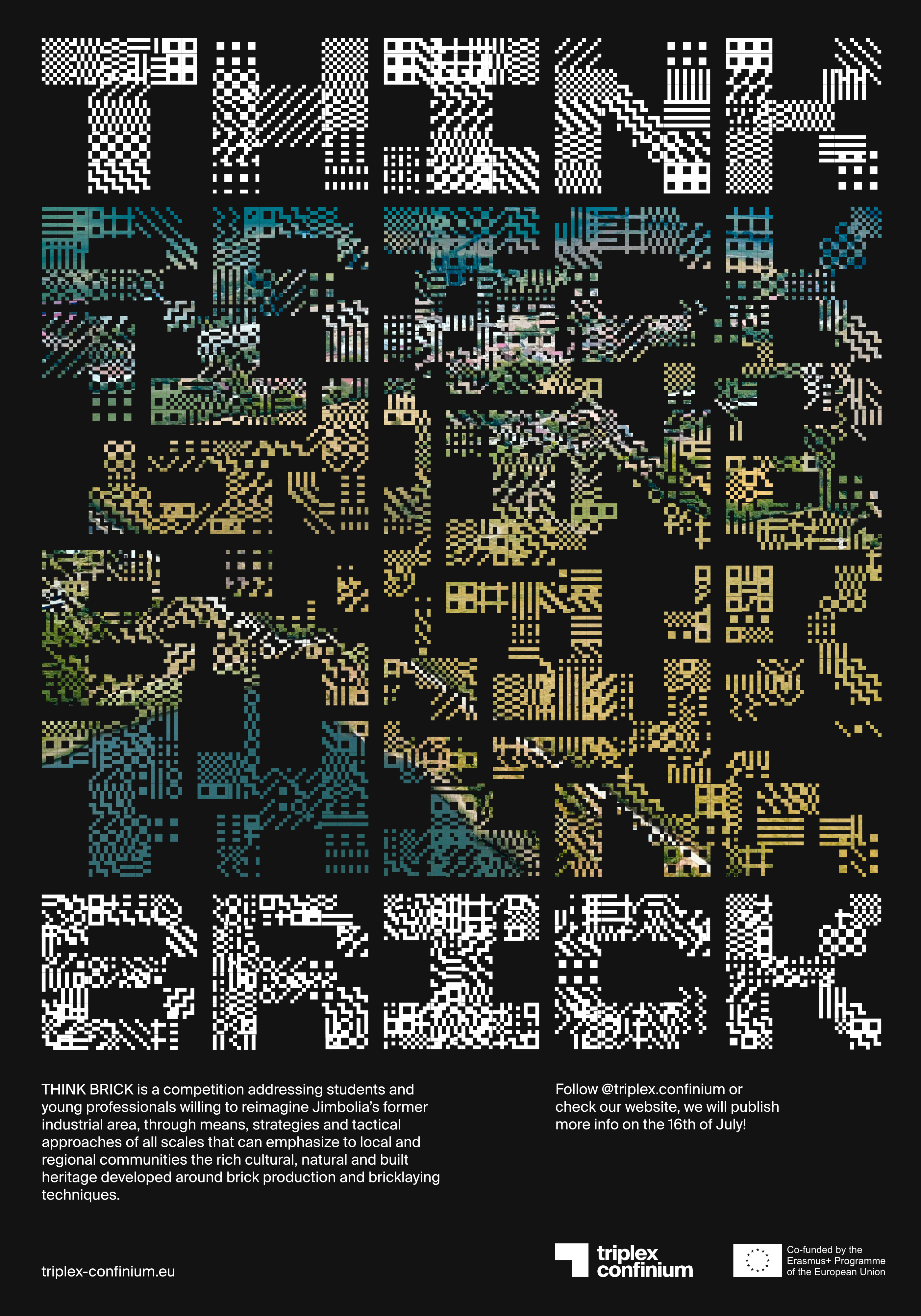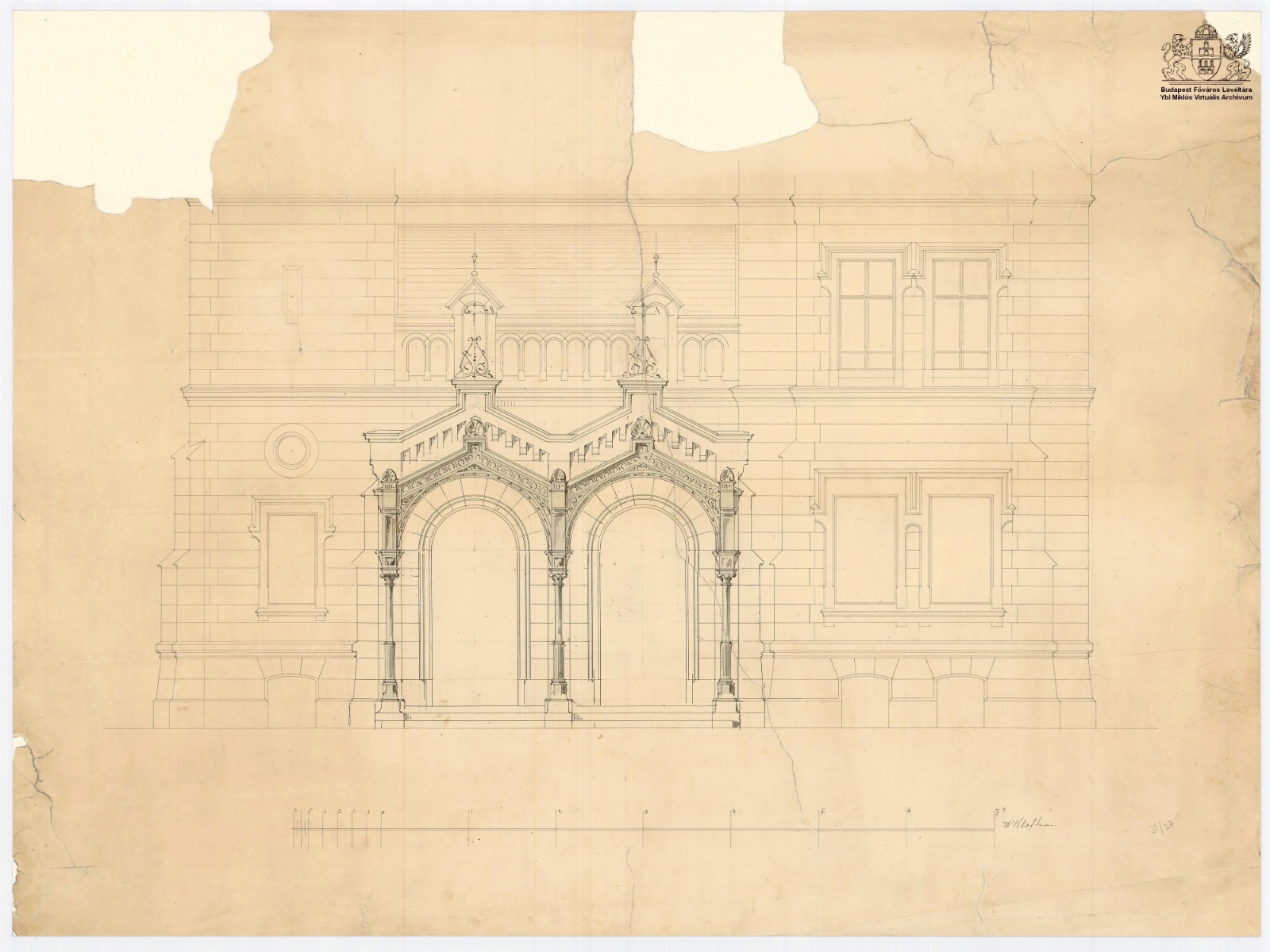BETWEEN THE LINES
The project proposes a brick line that connects Balta Szeles and Balta Herișanu at the heart of the quarry lakes in Jimbolia. This is a discreet, theoretically minded and historically reflexive intervention into a fragile environment. It responds to the requirements of the competition and it is mindful of the past of the city. The dialectic of memory and erasure
EXPANDING NATURAL BORDERS
”Expanding Natural Borders” belongs to that group of entries which placed their ideas in a wider context of the man-made, nature-reclaimed hybrid landscape of Jimbolia’s quarry lakes. Declaring the entire lake area as zone of their interventions, the project – almost alone among all competitors – paid attention also to the margins of the site, dealing with connectivity to the
SHIFTING PERCEPTION
The project entitled ‘Shifting Perception’ is an entry highly appreciated by the jury for its thoughtfulness, showing deep connection with the site. The project points out – and draws its concept on – the basic problematic of the current situation: people’s lack of deep relation and understanding of the site. Thus, states that a shift in perception is to be
THE BORDER THAT CONNECTS
A light intervention, with small constructions inserted at key points in the site, nicely woven with the vegetation. Their concentration on the borders would help bring together the lakes with the rest of the territory, while leaving the heart of the area mostly untouched. History is present in a symbolic way, becoming a resource for the future and a memorable experience.
JIMBOLIA TOGETHER
”Jimbolia Together” covers a large part of the competition criteria. It values the concept of brick by the fact that it uses this material to build the chimney, but also by the fact that both the pontoon and the social space in the dried lake are made of pieces that mimic the shape of the brick. In this way, the
EXPERIENCE COMPRESSOR_ impression point of Jimbolia
The building has a strong dual character, horizontal and vertical segment in terms of architecture, as well as daily activities on the ground floor and cultural content vertically in terms of function. The object was created as an enlarged artifact like those found at the site in question. Using locally available materials, the building strives to fit into the existing
WORKING WITH/ON THE CULTURAL LANDSCAPE
The term "cultural landscape" embraces a diversity of manifestations of the interaction between humankind and its natural environment. Cultural landscapes often reflect specific techniques of sustainable land-use, considering the characteristics and limits of the natural environment they are established in, and a specific spiritual relation to nature.
DIGITAL BRICK
How to turn a brick into something worth gold? If we want to answer such a question, we must understand the basic properties of brick. For centuries, great master builders possessed the gift of alchemist, knowing how to turn the tectonic properties of brick into precious architectural objects. Brick is one of the oldest known building materials used for more
THINK BRICK! ARCHITECTURE CONTEST
THINK BRICK is a competition addressing students and young professionals willing to reimagine Jimbolia’s former industrial area, through means, strategies and tactical approaches of all scales that can emphasize to local and regional communities the rich cultural, natural and built heritage developed around brick production and bricklaying techniques.
SURVEY ON Architectural Education During The COVID-19 Pandemic
It’s been a tough year for every one and even for us here at Triplex Confinium. With mobilities postponed until better times, partner schools further debated on their objectives for their common first Learning Teaching activity; the Jimbolia summer school. Following the road map set during the First Transnational Meeting, partners sought to better define their methodology within the three





